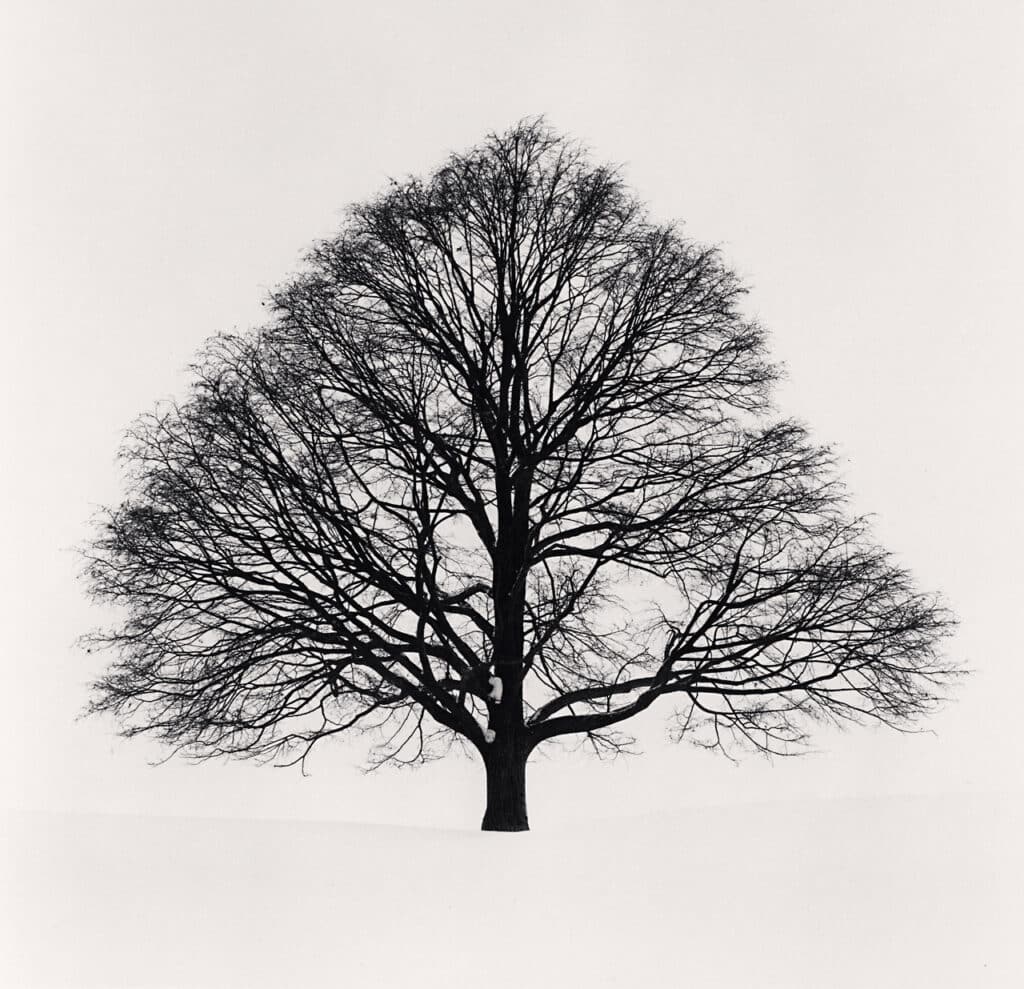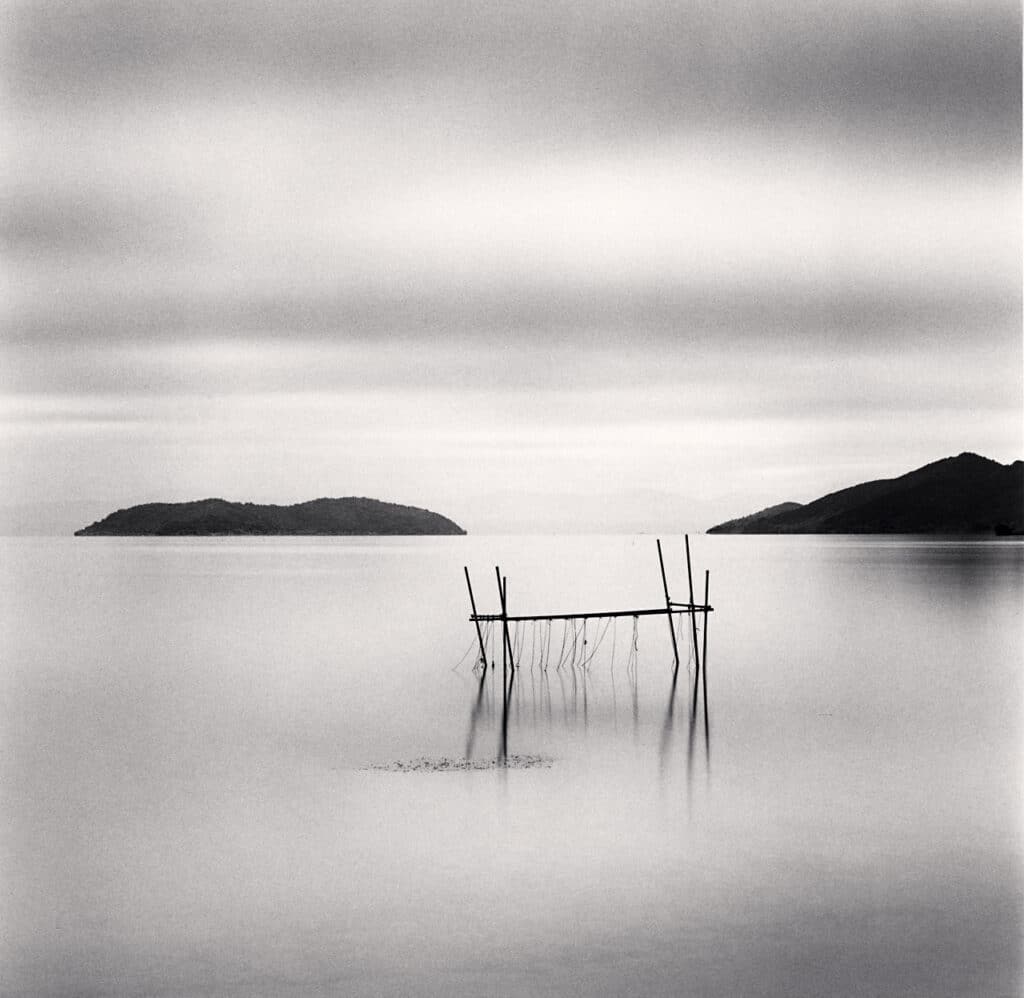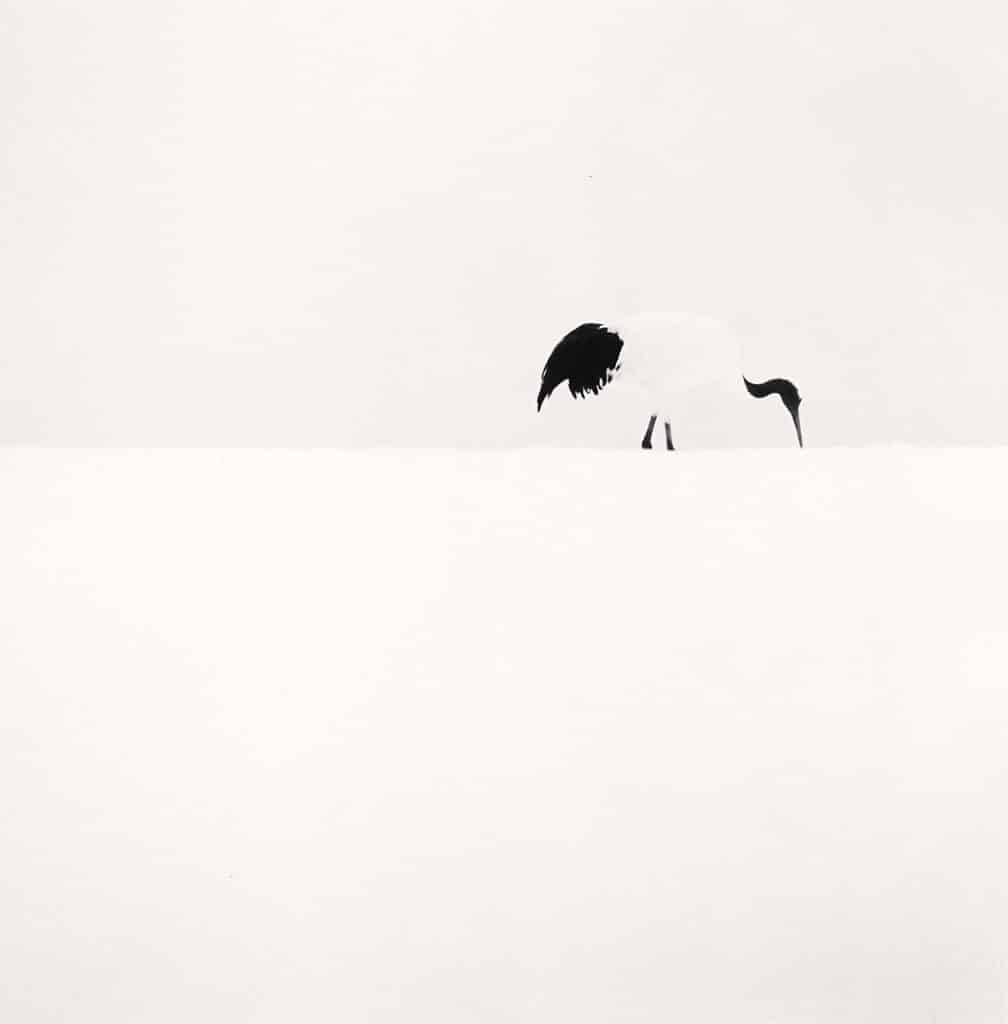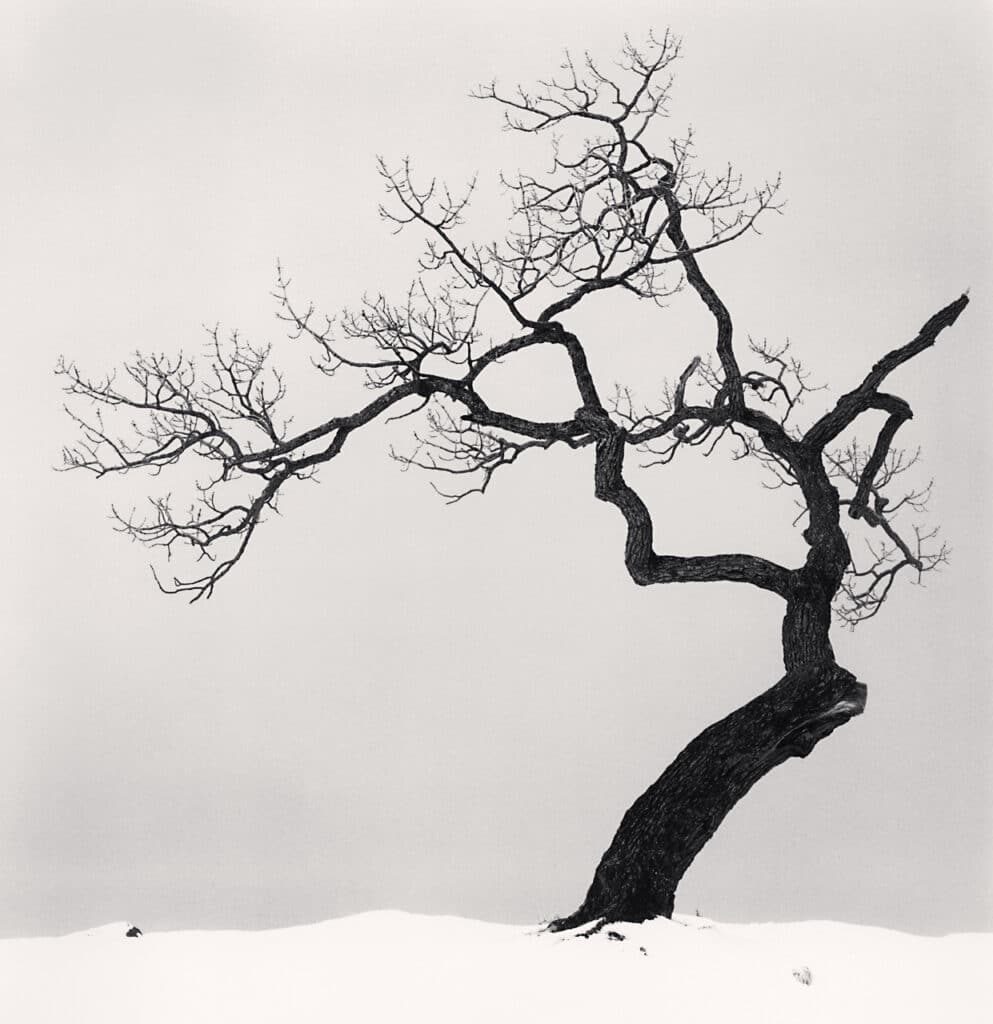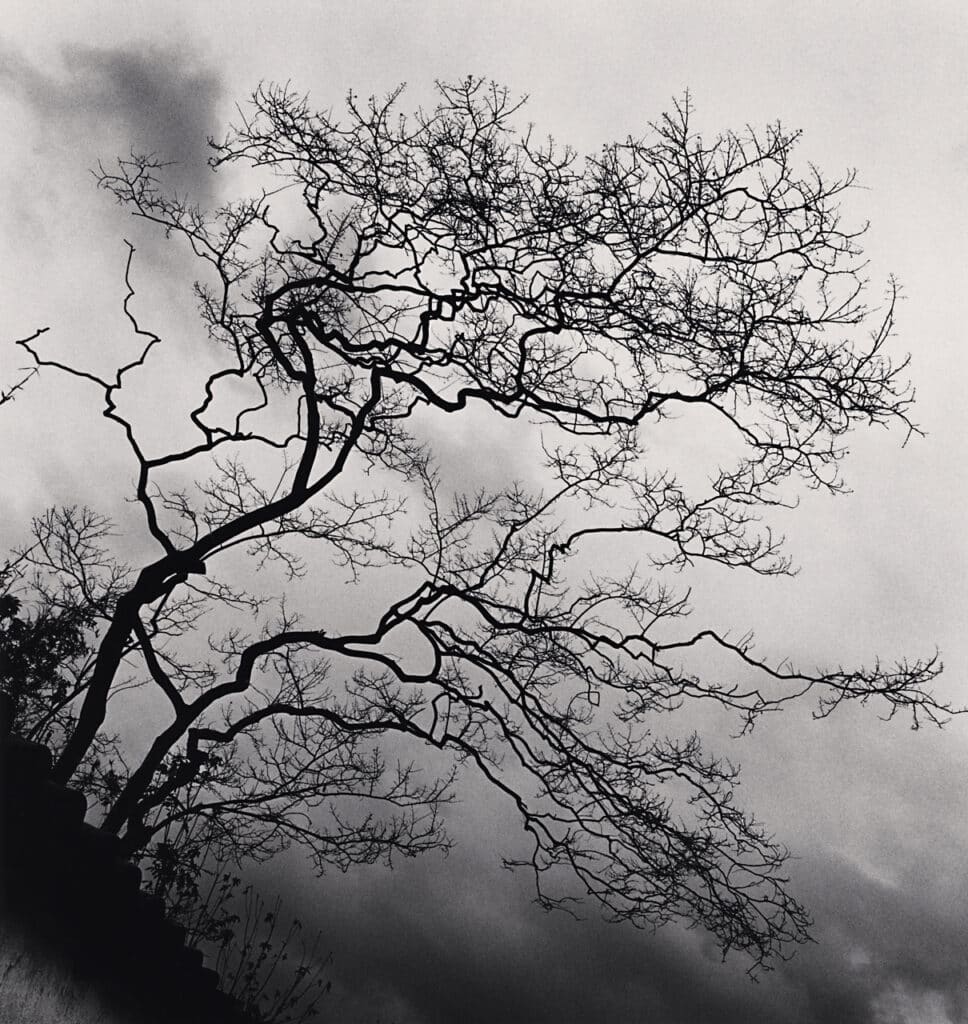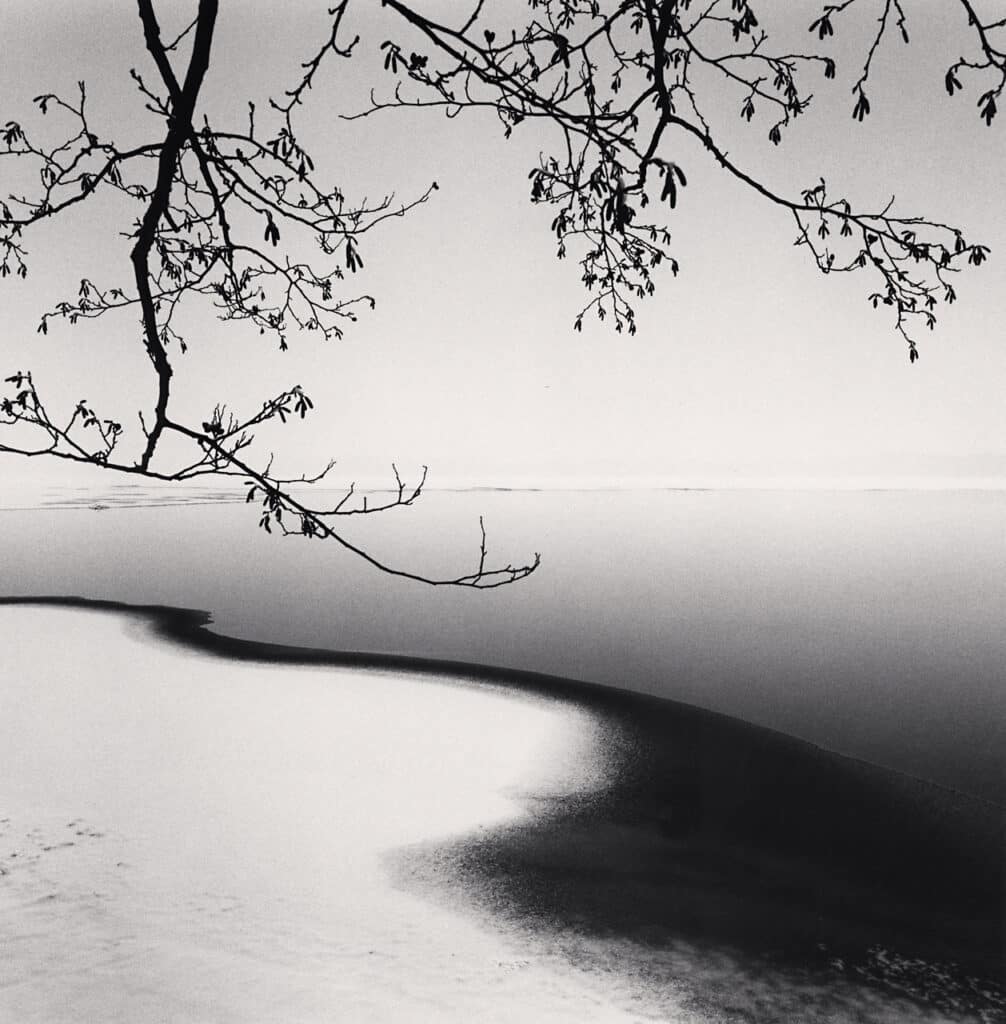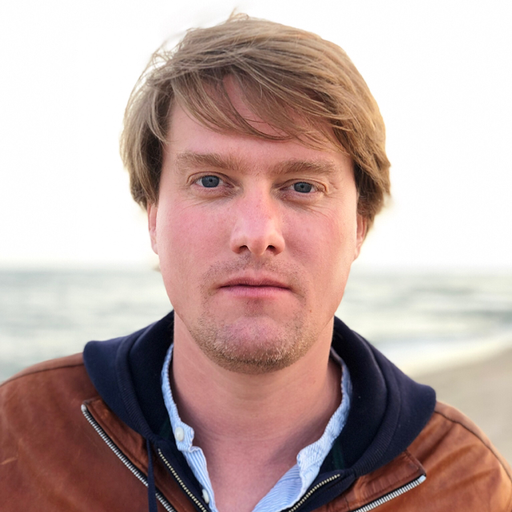If you have never thought about going to Japan, these images might change your mind. The entrance to a sanctuary, isolated in the middle of a lake. A solitary tree in a snowy landscape. A white bird blending in it. Michael Kenna’s photographs are as polite and elegant as Japanese people. He makes marvelous use of water, earth and plants, to remind us just how beautiful our planet is when we take care of it and dress it delicately. In fact, Michael Kenna has been photographing landscapes around the world for over 50 years. His in-depth explorations and imagery of Japan, which he first visited in 1987, stand out as perhaps his most distinguished and well-known works.
Blind talked to the photographer about his love affair with this fascinating country.
Why did you choose Japan to be the ground of one of your projects?
In a way, Japan chose me, in so far as I was invited to Tokyo for an exhibition and book publication in 1987. It seems only yesterday, and yet is astonishingly almost 37 years ago. My first conscious memories are of walking through orange lit streets in the Meguro district of Tokyo, in the middle of the night, slightly dazed, but wide awake with jet lag. All the shops were closed, yet mountains of merchandise lay unattended on the pavements in front of closed doors and shuttered windows, apparently safe from theft. It seemed surrealistic at the time, and still does.
I recalled this experience many years later when I inadvertently left my Hasselblad camera, lens, back and meter on a public park bench in Kumamoto, Kyushu. I discovered my loss, a few hours later, after driving many miles to another location, and was shocked and horrified that my guide appeared to be unconcerned, not in the least bit perturbed! He assured me that my equipment was completely safe. He was correct, of course, for we were in Japan, and my camera, after being handed in to a park attendant, was waiting for me to pick it up.
I can easily recall, with some nostalgia, my first explorations in Kyoto, wandering the lanes of Gion, shyly entering dark, exotic Buddhist temples and colorful Shinto shrines, attending ritualistic tea ceremonies, marveling at beautiful scrolls with kanji characters, discovering the mysteries of hot ofuro bathing, sleeping on tatami floors, and attempting my first faltering words of Japanese. I fell in love with Japan quickly, quietly, and irresistibly. Having returned to Japan many times since, now it feels like home and I feel a great sense of belonging and acceptance wherever I travel in this generous and hospitable country.
What do you particularly love in this country?
I am reminded of the immortal words of Rumi: “Let yourself be silently guided by that which you dearly love. It will not lead you astray”. Quite simply, I find Japan to be amazing, spectacular, deeply mysterious and irresistibly loveable. Physically, Japan has similarities to my home country of England: relatively small, inhabited for centuries, surrounded by water, with every patch of land and segment of coast full of rich histories and stories. In Japan, one sees and feels a conscious respect, reverence and honor shown towards the land. It is often symbolized by the ubiquitous vermilion torii gates, which remind us of the Shinto belief that deities and the universe reside in the land, trees, rocks, and water, as well as in shrines and temples. It is a belief dear to my heart.
In your pictures, which elements are you specifically looking to highlight?
I don’t think I’ll ever find it easy, or even possible, to specifically define what I photograph. My subject matter has changed over the years depending on mood, age and what I happen to stumble across. Generally, I look for what is interesting to me, out there in a three dimensional world, and I attempt to translate and/or interpret in a way that it becomes visually pleasing in a two dimensional photographic print. I search for subject matter with visual patterns, interesting abstractions and graphic compositions. I enjoy places that have mystery and atmosphere, perhaps a patina of age, a suggestion rather than a description, a question or two. The essence of the image often involves the basic juxtaposition of our human made structures with the more fluid and organic elements of the landscape. I look for memories, traces, evidence of human interaction with the landscape. Sometimes, I photograph pure nature, at other times it could be urban and industrial structures and scenes.
Before approaching a location and photographing, I rarely do any elaborate preparation. Essentially I walk and explore. I never know whether I will be in a place for minutes, hours or days. I feel that photographing is akin to meeting a person and beginning a conversation. How does one know ahead of time where that will lead, what the subject matter will be, how intimate it will become, how long the potential relationship will last? Certainly, a sense of curiosity and a willingness to have patience and allow a subject matter to reveal itself, are important elements in this process. There have been many occasions when interesting images have appeared from what I had considered uninteresting places. The reverse has been equally true and relevant. After fifty years of photographing, my conclusion is that one needs to relinquish the notion of control and accept any and all surprises. Control over outcome is not always necessary or even desirable.
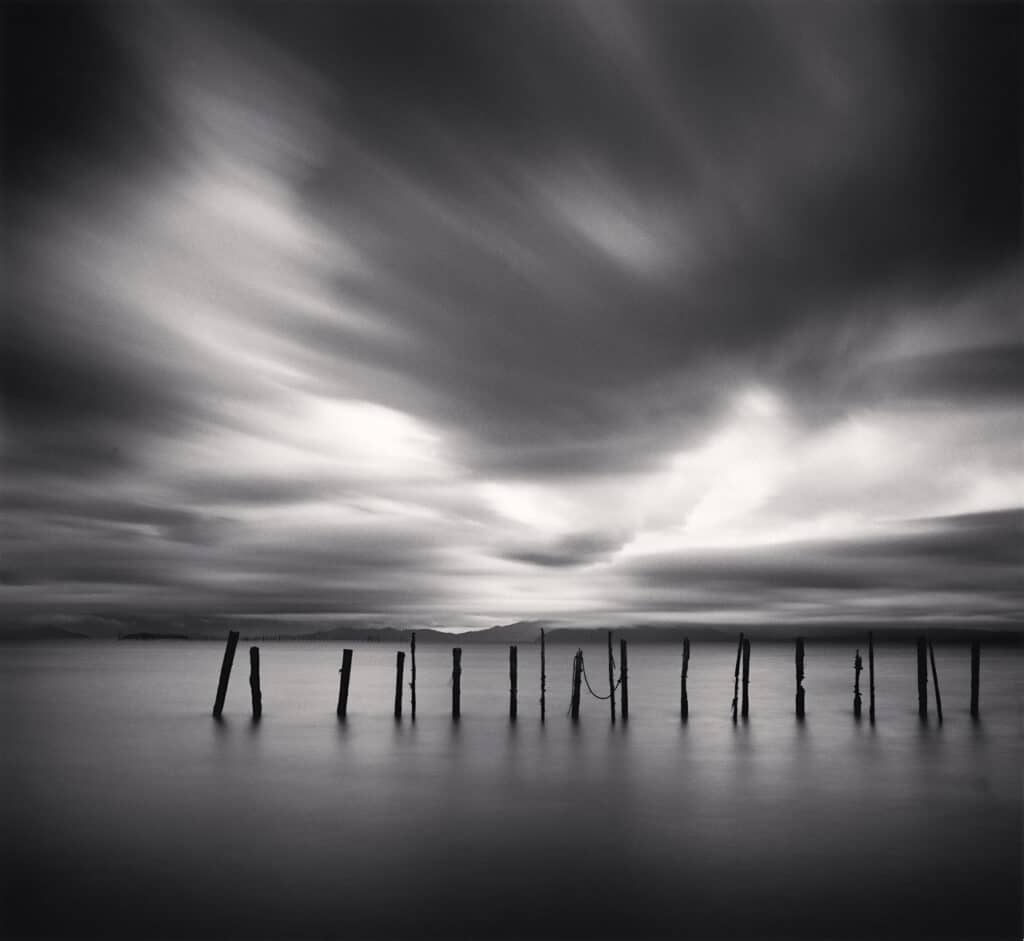
How did you travel, how many times and for how long, to create this series?
Between the years of 1987 and 2000, my exposure to Japan was primarily urban as I visited various cities for exhibition openings and book signings. The more serious photographic travels around the Japanese landscape happened in 2001 as I began to explore the surroundings of Mt Fuji, Biwa Lake and along the Japan Sea coast in Honshu. I have very dear friends and associates in Japan, and usually I travel with a friend or guide, for a week or two at a time. Having somebody who speaks Japanese greatly helps with the logistics of finding locations, accommodation, food, and, very importantly, asking permission to photograph. In 2002, I visited Kyushu, Okinawa and other locations in the South. For my 50th birthday in 2003, I spent a month following the eighty-eight Kobo Daishi Buddhist temple pilgrimage on the island of Shikoku. For the past twenty two years, I have tried to return to Hokkaido every winter. Japan was the last country I visited before the Covid pandemic began, and it was the first after. These trips, according to the writings of the art critic Kotaro Iizawa, planted seeds which eventually blossomed into a full-grown love affair with this magical land.
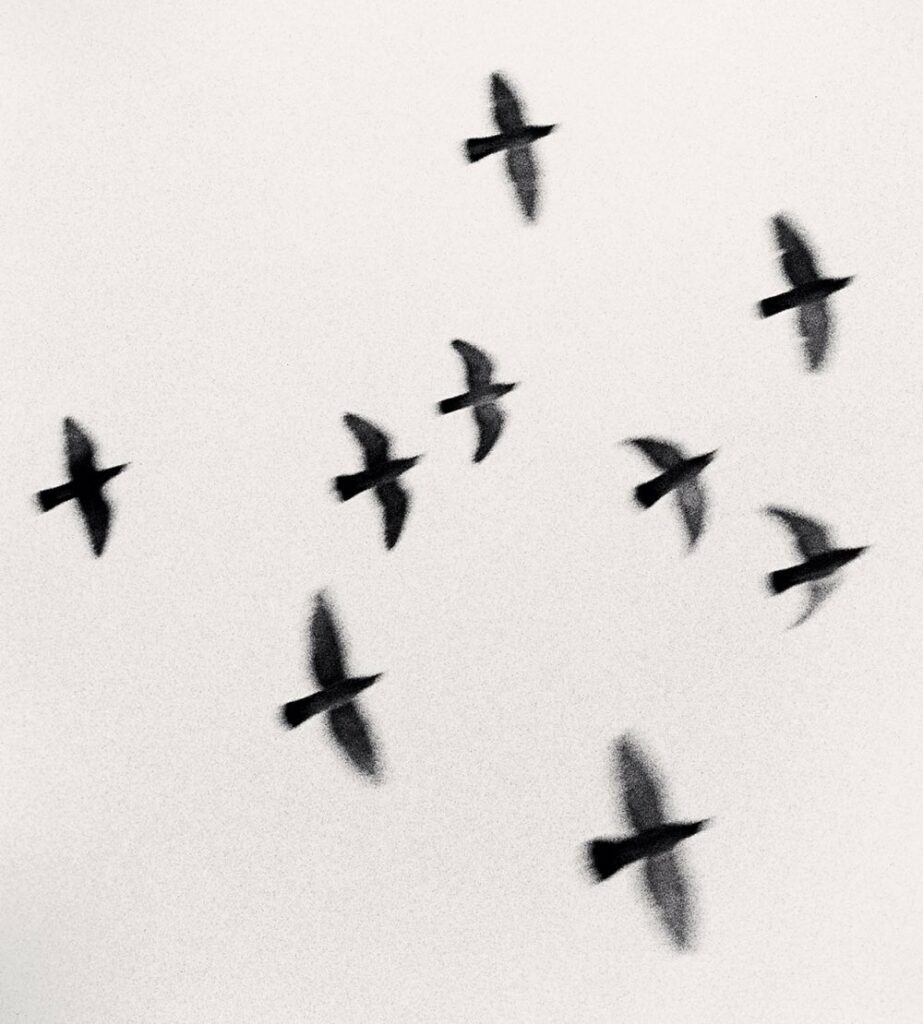
Is the “Nine Birds” picture a tribute to Masahisa Fukase’s work?
I love the “Solitude of Ravens” series by Masahisa Fukase – those images are so haunting and dramatic. I would be absolutely delighted to claim that any of my pictures could be considered conscious tributes to his work. Alas, I cannot make that claim. In my early years in photography I deliberately and consciously imitated the work of the many masters that appealed to me: Atget, Brandt, Brassai, Giacomelli, Stieglitz, Sudek, etc. I went to the places they photographed to better understand their vision. The longer I stayed in photography, the more I realized that each of us is the result of a myriad of influences, some known and many not, along with our genetics. My exposure to Fukase was not until 1981 when I saw his work in an exhibition at The Stephen Wirtz Gallery in San Francisco. No doubt, his work has influenced mine. How could it not?
Is there any message conveyed by your series?
In a word, my message would be gratitude – for the gift of life, for love, for the beauty and fragility of this world we live in. Japan has a long and rich tradition of reciprocal gift giving, and I have been the grateful receiver of so much over so many years. I know that I will never be able to give back in equal amounts, but I hope this work can be seen as a small token of my desire to do so. I also hope that these photographs can be viewed as an ongoing homage to Japan, and they will serve to symbolize my immense appreciation and deep gratitude. It has been an astonishing journey so far, for well over three decades, and long may it continue.
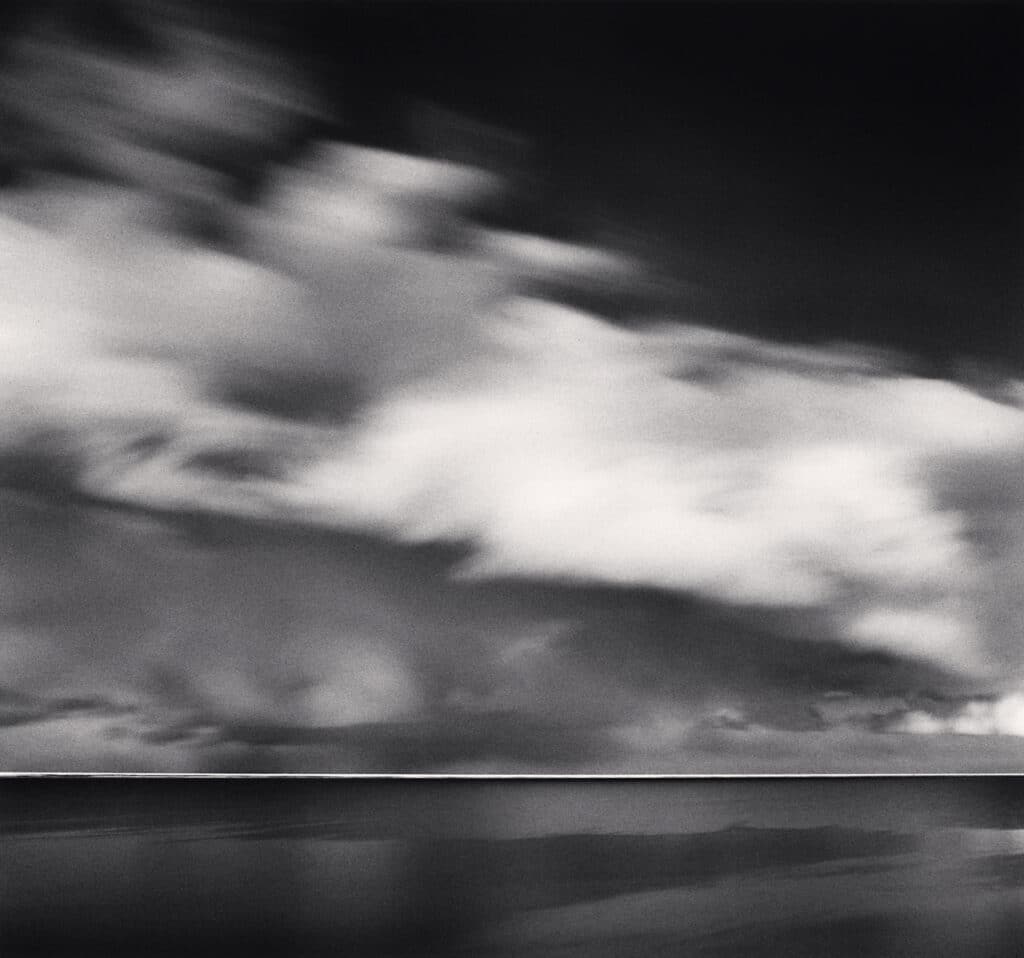
“Japan / A Love Story” by Michael Kenna, is on view at Peter Fetterman Gallery, in Santa Monica until July 20, 2024.

